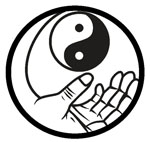 During the cold dark days of winter, is it hard for you to get up in the morning? Do you experience a drop in energy levels in the afternoon and feel a need for more sleep? Is it difficult to concentrate? Do you have a reduced sex drive? These are symptoms of Seasonal Affective Disorder or SAD. Other symptoms might include appetite changes, especially sweet and starch cravings, weight gain, irritability and anxiety. You may also experience some of the symptoms in other forms of depression such as guilt feelings, hopelessness, and physical ailments such as headaches. SAD symptoms come back year after year and tend to come and go about the same time each year.
During the cold dark days of winter, is it hard for you to get up in the morning? Do you experience a drop in energy levels in the afternoon and feel a need for more sleep? Is it difficult to concentrate? Do you have a reduced sex drive? These are symptoms of Seasonal Affective Disorder or SAD. Other symptoms might include appetite changes, especially sweet and starch cravings, weight gain, irritability and anxiety. You may also experience some of the symptoms in other forms of depression such as guilt feelings, hopelessness, and physical ailments such as headaches. SAD symptoms come back year after year and tend to come and go about the same time each year.
SAD may affect as many as half a million people in the US. Another 10% to 20% may experience mild SAD. SAD is more common in women than men, and is uncommon in those under the age of 20. SAD is more common in northern regions such as the Pacific Northwest.
Some scientists believe SAD symptoms may be a biological response to reduction in seasonal sunlight. Melatonin is involved in a complex process that sets your biological clock. Morning sunlight tells your brain to begin its daily rhythms. Although SAD’s exact causes are not yet understood, it is likely that serotonin levels in the brain are disrupted, leading to depression and other symptoms.
The good news is that there are several ways to address SAD naturally. One of the easiest ways is through light therapy. Light therapy uses a special light box to expose your face to light for 30 minutes in the morning simulating summer morning light.
Fight the carb cravings, and eat healthy protein such as nuts, eggs, meats, and beans with each serving of carbohydrates. Choose complex carbohydrates from whole grains and vegetables.
Although we may want to be indoors more during the winter months, exercise is an important part of addressing depression. It can be helpful to just get out and walk for 20 minutes on a regular basis.
There is a link between low levels of Vitamin D and SAD. Most data supports a daily dose of 2000 IU of D3. Other sources of Vitamin D are cod, salmon, herring, sardines as well as fortified cereals and milk. Additional supplementation with omega-3 fatty acids, B vitamins, melatonin, St John’s Wort and amino acids such as 5-HTP may be useful as well. There are potential drug interactions with these therapies, so check with your health care provider.
Acupuncture shows promising results in treating SAD by releasing serotonin and noradrenaline-norepinephrine and has no side effects. Acupuncture has also been shown as an effective treatment for insomnia and fatigue. A treatment plan created with your acupuncturist can improve mood and energy by restoring balance to your body’s systems.

